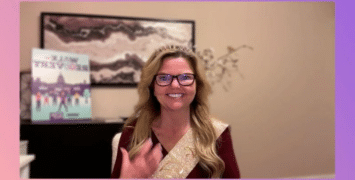Your cart is currently empty!

Monday Thoughts 2/1/2021

“What if the journey to being, the infinite being who you truly are, is the greatest adventure you will ever go on?” ~~Anonymous
“Just stick to the ordinary circumstances without labeling them ordinary. Be open to them with no desire to change them in any way. They are, in fact, already magical and miraculous.” ~~Francis Lucille
“Happiness is a matter of one’s most ordinary and everyday mode of consciousness being busy and lively and unconcerned with self.” ~~Iris Murdoch
#6 Life can be ordinary or it can be great.
Greatness is mine by a conscious effort.
One of the hallmarks of addiction is the feeling of lack or never enough. At its core, this can feel overwhelmingly like “I am never enough” which is untrue. This often played out in the form of drama or the desire to rush through something in order to get somewhere else. Rarely ever content with the moment, I sought out greater distraction or mounting drama. Alcohol was the only tool in my toolbox during this time and it never fixed anything. However, sobriety and recovery change everything.
In our WFS Program booklet it states “Although we only get a one-way ticket through life, we speed through our days as if planning to enjoy them at another time. We live as if we have an endless number of tomorrows.” Statement #6 practiced daily can open the door to being present. Experiencing the moment as it is with each of the senses bonds us to that moment and lays a foundation for feelings of fulfillment.
Today, even in the midst of a global pandemic, there are tools available to engage us in the present moment. First, begin with the knowledge that the present moment is always here. It is always within reach and it looks and feels different for everyone. Here are 10 ways to connect to the present moment from Karson McGinley which was posted on Chopra.com:
1. Listening Meditation
Start where you are. Take a moment while sitting at your desk, taking a break at work, or even eating in a restaurant while your tablemate is in the bathroom. Practice experiencing each sound as it happens, without trying to judge it, label it, or push it away. If you find yourself getting irritated by the sounds around you (e.g., “I’m trying to write an article here; why won’t that dog stop barking?”), try using the sounds as a tool for mindfulness. Bind your consciousness to the sounds as an indication of what is happening during the exact moment you are in. Over time, your attitude toward the sounds around you will change from annoyances to opportunities for awareness.
2. Keep a Journal
Start your days or end your nights with an investigation into your thoughts and feelings. You may numb out on alcohol, drugs, television, or other distractions and miss the opportunity to uncover what your feelings are trying to actually tell you. Feelings do not just go away if left unacknowledged, so take a few minutes several times a week to work through what’s going on with you on the inside. Bear witness to how the emotions shift as you shine the light of awareness on them; they always pass. Mindfulness in this way means giving your emotions the attention they deserve, the way you would to a friend or family member.
3. Eye Gazing
Gaze into the eyes of your baby, a pet, or a partner who’s willing. Depending on who you share this experience with, you may find silent eye contact to be awkward at first, but consider the benefits of social connection and truly being seen. Sustained eye contact has the ability to remind you that you are not alone, that you are one with other beings, and are deeper than your external appearances. Eye contact with a baby or small child strengthens the bond you share. Locking eyes with your cat or dog taps you in to the inherent presence of animals in any situation (inspiring, indeed). And if you catch a glimpse of yourself in the mirror, lingering on the reflection of your own eyes can help you to experience self-compassion and self-love.
4. Object Meditation
Yes, this is a meditation that is often done during a formal practice, but how many other ways can you merge with the object of your concentration? Try sitting at your kitchen table and look at—really look—at the food on your plate. Notice the colors, the textures, and the arrangement on the plate. The idea is to concentrate on something that perhaps you never fully contemplate—a flickering candle, a small piece of artwork, or even your own hands. You don’t have to stare at it for long, just a few seconds can bring you deeper into the moment you’re in.
5. Be One with Nature
As you walk your dog, stroll to the end of your driveway to pick up the paper, or go for a run in your neighborhood, practice fully embracing the nature around you. The myriad types of trees, the colors of the flowers, the smell of the ocean, and the twinkling of the stars are all invitations to be one with the now. Take a few extra minutes here and there to really receive the healing vibrations of the earth, and you’ll feel an inner settling that will bring you back to center.
6. Switch Up Your Routine
When you become complacent in your routines, it easy to go on autopilot. If you notice yourself arriving to work without remembrance of the commute, take a different route going home and become a tourist in your own city. Want to slow down your eating habits and really savor your food? Try eating with your non-dominant hand. Have you grown attached to the same spot in your group exercise or yoga class? Move to a different part of the room and get a fresh perspective. Simple acts that shake up your routine help you to experience the newness of your familiar activities, thereby calling for an increased sense of presence.
7. Drive in Silence
Speaking of your commute, try experiencing a quiet drive, practicing mouna, or sacred silence in the car. Give yourself time to decompress from your day or allow yourself to be silent so you can take in the sights around you. When approached this way, your daily commute from here to there becomes a mindfulness act in and of itself; no time is wasted or taken for granted. If you find yourself mindlessly listening to the radio as background noise, switch it up by alternating your audiobooks, podcasts, and playlists with silent drives to slow things down and be alone with yourself.
8. Unplug from Technology
It may seem obvious, but it’s worth mentioning that the simple act of disconnecting from your devices can bring you right back to where you are. Anytime you are working on a computer, using a smart phone, watching TV, or checking social media, your attention is pulled outward, away from the moment you are in. In fact, most people feel nervous or flat out incapable of being alone with “nothing to do.”
When was the last time you sat in the waiting room at the doctor’s office without distracting yourself with some form of entertainment? What about sitting in perfect awareness during an airplane flight or a train ride? (Re)train yourself to be tech-free, at the very least for the first and last hour of the day. Better yet, unplug for an entire day every week or month. It can act like a reboot to your hard drive.
9. Create Pauses
Consider the pace of your life and work pauses into your daily rhythm. Before responding to a question, for example, pause and then answer. Before taking another bite of your meal, pause and really taste what is in your mouth. Recognize when things trigger you to become reactive and challenge yourself to pause amidst the inner conflict. Perhaps it is when a certain person tells you what to do, when you feel judged, or when things feel rushed. Try taking a pause, a purposeful moment of recalibration, and check in with the moment you’re in. A single breath in a moment of pause can create just enough space to notice your tendencies and make more mindful choices.
10. Connect to Your Senses
It only takes a moment but connecting to your senses will help you make a memory more effectively than taking a picture. When you find yourself in a moment you want to remember (e.g., you child’s first steps, a beautiful hot air balloon floating through the sky, or your first in-person view of the Grand Canyon), take the time to drop in to each of your sensory experiences.
- What is the smell?
- What is the temperature?
- What is the taste of the air?
- What are the sounds?
- What are the colors?
- What are the details of what you see?
When you take the time to really honor your experiences by paying attention to the details, you create mental snapshots that can last a lifetime.
Hugzzz
Karen
Hi 4C Women,
After I read Karen’s message last night, I woke up this morning and as I glanced out the window, I saw the most beautiful sunrise colors peeking through the blinds. As I opened the blinds more fully, I just stared in awe and understood Karen’s message of being in the moment, to pause, really see what is right in front of me. I love all of the tools she has shared with us. Switching up your routine is a wonderful way to be aware.
There are times when I got lost (before GPS) and marveled at places that I would have never discovered if I was on a familiar route. Years ago, I was in the audience of the Sally Jessy Raphael show with guest, John Bradshaw, counselor and author. He asked the audience members to write a letter in their less dominant hand to someone who caused hurt and letting them know the depths of pain caused by it. I wrote a letter to my bio father and it was amazing how using a less dominant hand made me pause as I focused to write the words in my heart onto paper. It was cathartic.
A few years ago, I attended a Mindfulness workshop at the WFS conference. In fact, I attended it two years in a row! We selected a partner and we did an exercise with our eyes closed and then the eye gazing exercise. It was intense and brought up a lot of feelings that quite surprised me and opened up a thoughtful conversation with my partner.
I have driven to PA/NJ many years to visit family and the in-person WFS conference and tried driving in silence. It was quite challenging and I sometimes found myself in tears from the memories of living in those states, missing my family and friends, knowing I’d be seeing them soon. Another time, I cried because my daughter had been released from the hospital and although she was fine staying at my home and my granddaughter was close by, I hated leaving her. I organized the most detailed plans to provide support during my absence. Then I from sadness to anger because my ex lived only 45 minutes away and was quite uncooperative. I realized that silence was definitely a means to opening up my feelings. Not always comfortable but quite authentic.
The last tool in Karen’s amazing toolbox is connecting to your senses. I am going to practice this as I feel it will create an intentional way of being in the moment. What a powerful impact on a memory I am wanting to hold onto but never had a way such as this to utilize.
Karen’s last comment is the perfect way to end this message – When you take the time to really honor your experiences by paying attention to the details, you create mental snapshots that can last a lifetime.
Bonded through practicing these tools in creating greatness by a conscious effort, Dee



